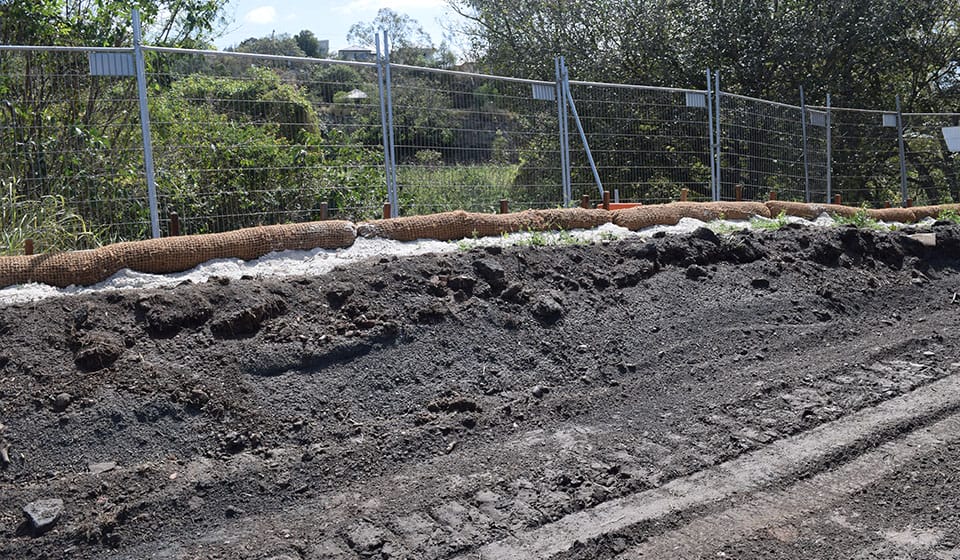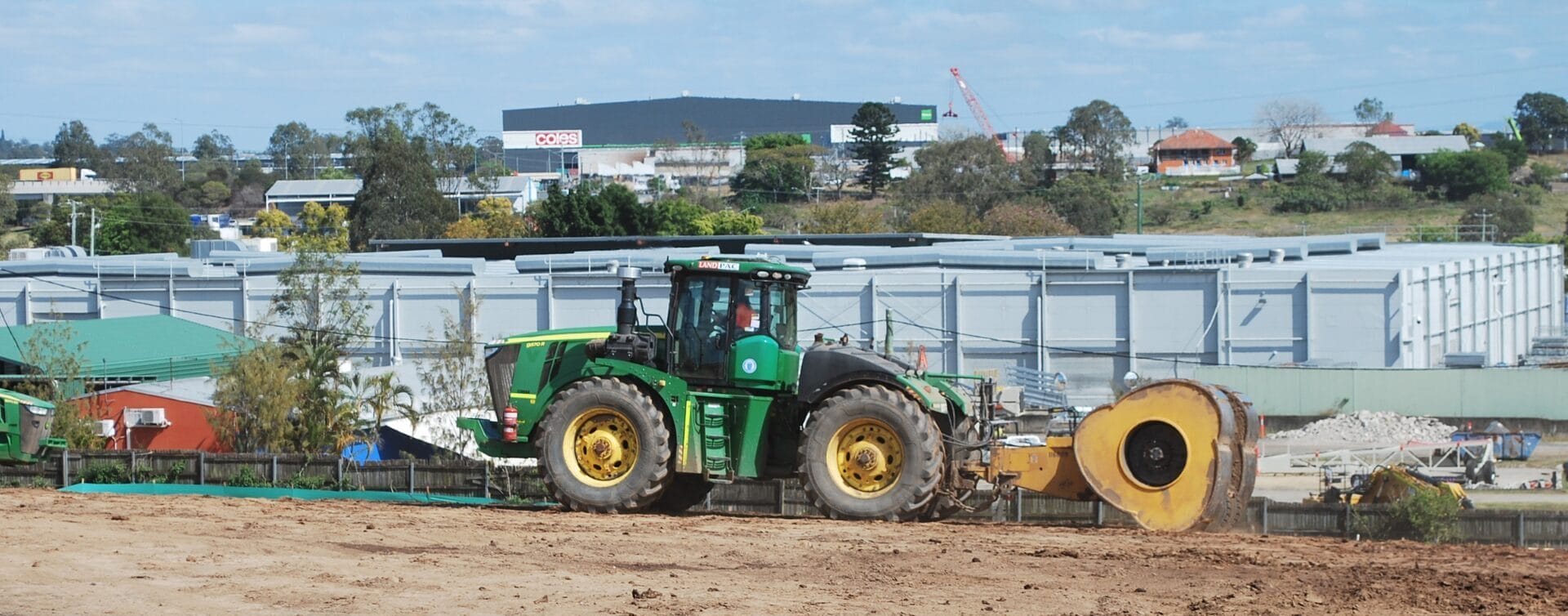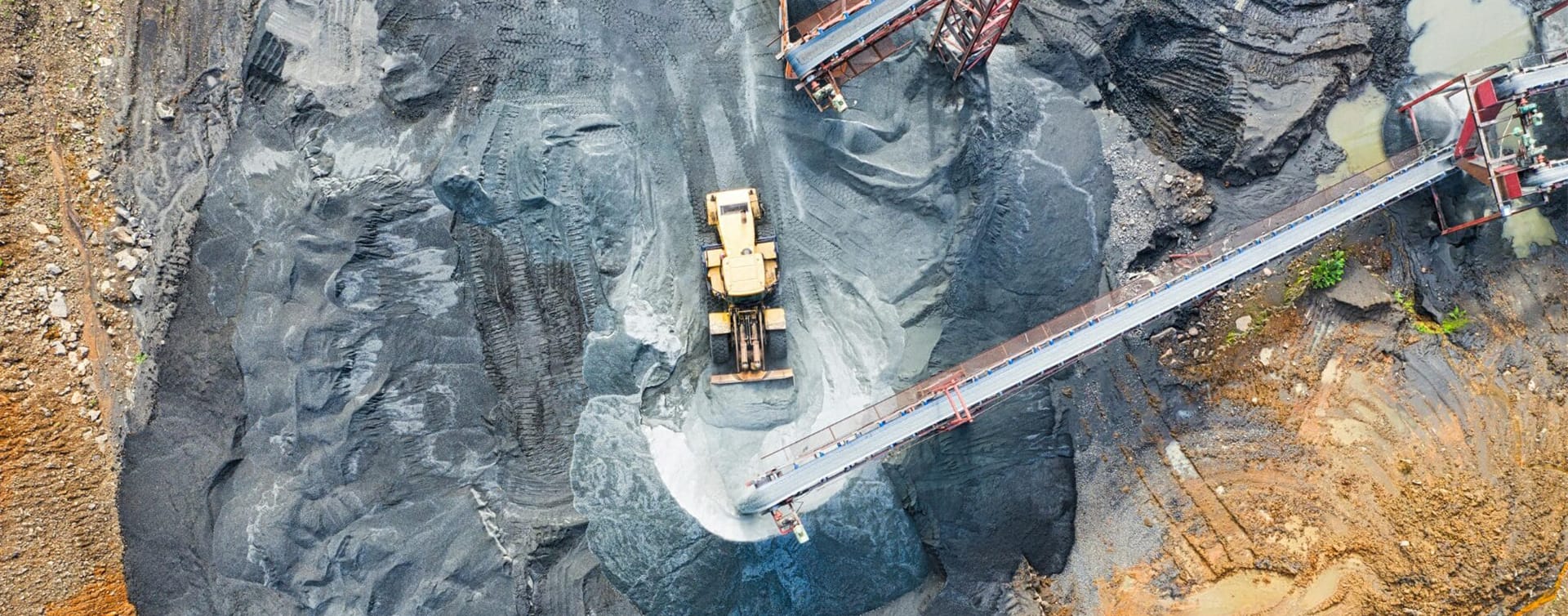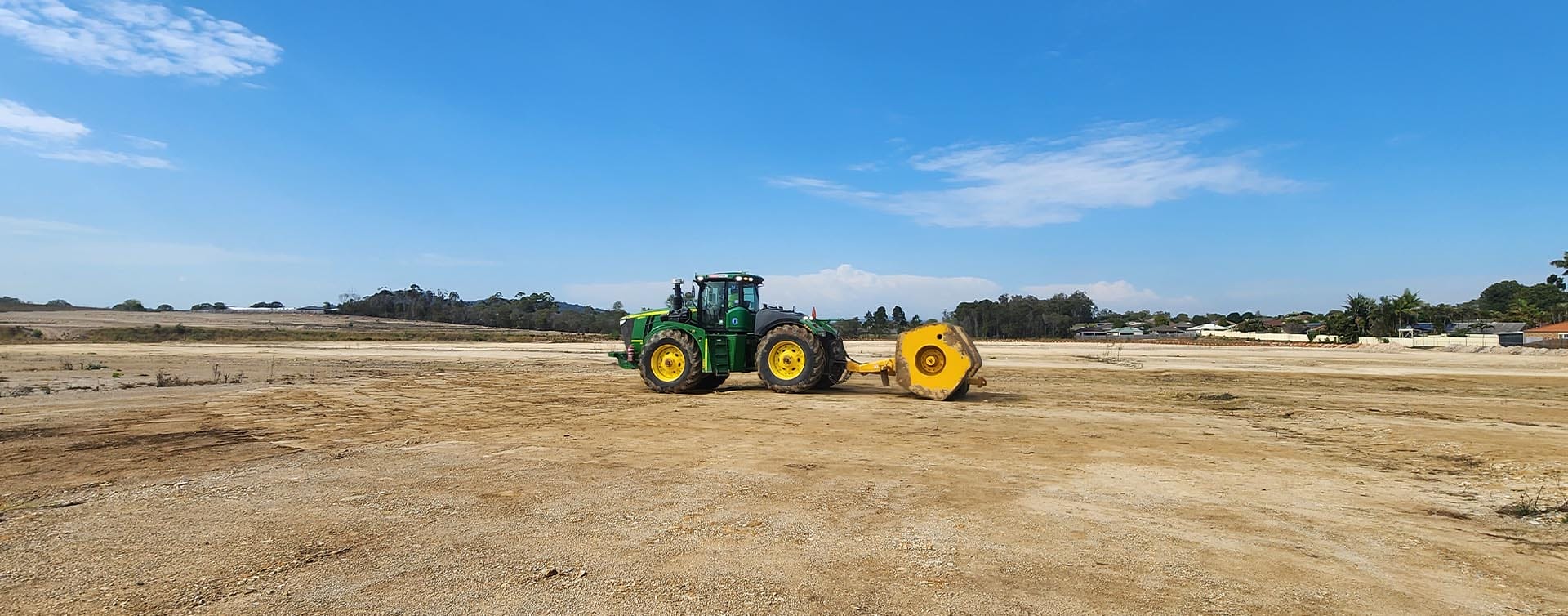Laying the Foundation: Why ground improvement engineering matters
Laying the foundation: Why ground improvement engineering matters
Every building project starts with a solid base. In construction, one of the most important aspects is the condition of the ground for the site-specific project base. In the early stages of any project, it’s critical to consider these questions:
- Will the treated ground support the proposed loadings?
- Will there be issues with differential settlements, long-term settlements, moisture variations, material types, deleterious materials and the like?
- How can you prepare the base layers thoroughly with a cost-effective engineered solution?

What is ground improvement engineering?
Ground improvement engineering refers to the process of modifying soil or rock beneath a construction site to make sure the surfaces are level, stable, and strong enough to support what’s going to be built on them. This is a necessary step to ensure that construction can commence, while minimising any long-term safety risks and maintenance costs.
Ground improvement methods have been one of the most dynamic and rapidly evolving areas of geotechnical engineering and construction over the past 40 years. Sites can contain varying soil characteristics at differing depths and often require an improvement in strength and reduction in potential collapse.
It’s a field of geotechnical and technological engineering that is done to enhance the soil’s ability to support structures by increasing strength and stiffness, preventing soil liquefaction during earthquakes, and mitigating the effects of settlement. Additionally, poor soil conditions can lead to foundation failure, structural damage, or slip circle failures – all of which pose significant safety hazards, and can be extremely costly to repair or maintain.
The Benefits of Ground Improvement
Of course, we can’t neglect the significant environmental benefits of ground improvement engineering. By improving soil conditions from the top down (in-situ), it reduces the need for major earthworks, excavation, and other activities that can damage the surrounding environment – not to mention the substantial costs associated with these processes. But they don’t stop there. Other benefits of ground improvement include:
- Increased Bearing Capacity – allowing the soil to support heavier loads without failing.
- Improved Stability – critical for the safe design of infrastructure such as buildings, bridges, and retaining walls.
- Reduced Settlement – important for the long-term performance of infrastructure built on top of soil, including underground services.
- Increased Durability – ground improvement can make soil less susceptible to erosion, weathering, and other forms of degradation.
- Cost Effectiveness – provides an alternative to other forms of foundation construction, such as deep foundations, which can be expensive and time-consuming.
Overall, ground improvement methods can lead to safer, more reliable, and more cost-effective infrastructure, which can benefit both the public and private sectors. High Energy Impact Compaction (HEIC) can be far more efficient and productive than conventional compaction methods – around a quarter of the cost, and 50% quicker than traditional methods.
Need to prepare your site more efficiently? Get in touch with our team
What are the ground improvement techniques?
Ground improvement techniques can be broadly classified into two categories:
- Soil replacement – involves removing weak or unsuitable soil and replacing it with stronger or more suitable material.
- Soil modification – refers to changing the properties of existing soil.
One of the most used soil modification techniques is compaction or densification. This reduces compressibility and increases shear strength, leading to improved bearing properties and reduced settlement of the treated soils. This process requires heavy machinery to compact the soil to a desired density and stiffness. There are various methods of soil compaction including vibro-compaction, dynamic compaction, and static compaction. HEIC can make light work of land that other methods of compaction simply can’t touch, opening up new development and commercial opportunities.
As an alternative to compaction, you can opt to stabilise or reinforce your soil. Both stabilisation and reinforcement involve adding additional compounds to the existing soil to improve strength and stability. In many cases, a combination of soil stabilisation and soil compaction techniques may be used to achieve the required engineering properties of the soil. The optimal technique (or combination of techniques) depends on factors such as soil type, site conditions, construction requirements, and budget constraints.
Intelligent Ground Engineering Solutions
Over the last decade, there have been several innovations in the field of ground improvement which have provided engineers and contractors with a range of options for improving the strength, stability, and durability of soils in various civil engineering projects.
Some of the most significant innovations that Landpac can provide include:
- Dynamic Compaction using HEIC or RIC: High Energy Impact Compaction (HEIC) is a form of dynamic compaction which exerts high dynamic loads to in-situ soils with the rotation of non-circular Impact drums. Rapid Impact Compaction (RIC) is a form of dynamic compaction which exerts high dynamic loads to in-situ soils with repetitive dropping of a circular plate from given heights attached to a large excavator mast. (insert graph/chart here)
- Soil Stabilisation with Nanomaterials uses materials such as nanoclay, nanosilica, and carbon nanotubes.
- Stone Columns involve creating vertical columns of compacted stone or gravel in the soil.
Ground improvement innovation is an important aspect of geotechnical engineering that enables efficient construction of infrastructure projects in challenging soil conditions.
Conclusion
The correct application of ground improvement techniques is crucial to ensure the stability and safety of geotechnical structures. With ongoing innovation and advancements in technology, these techniques will continue to evolve, while improving the safety and sustainability of our built environment.
Need ground engineering advice? Landpac Asia-Pacific is ready to consult to help you determine the best approach for your next project. Get in touch
Latest news

Uncontrolled vs Contaminated Fill | Why It Matters
Understand the difference between uncontrolled and contaminated fill, the risks of each, and how Landpac’s HEIC method delivers safe, stable ground.

High-Energy Impact Compaction in Australian Mining
From haul roads in WA to tailings dams in QLD, High-Energy Impact Compaction (HEIC) is reshaping ground improvement across Australia’s mining operations. Backed by Intelligent Compaction Measurement (ICM), HEIC delivers faster, deeper, and more reliable results, boosting safety, sustainability, and cost-efficiency in some of mining’s toughest conditions.

Understanding High Energy Impact Compaction (HEIC)
High Energy Impact Compaction (HEIC) revolutionises ground improvement with its ability to achieve superior soil density and stability. Unlike traditional methods, HEIC uses advanced rollers and compaction technology to penetrate deeper soil layers.
